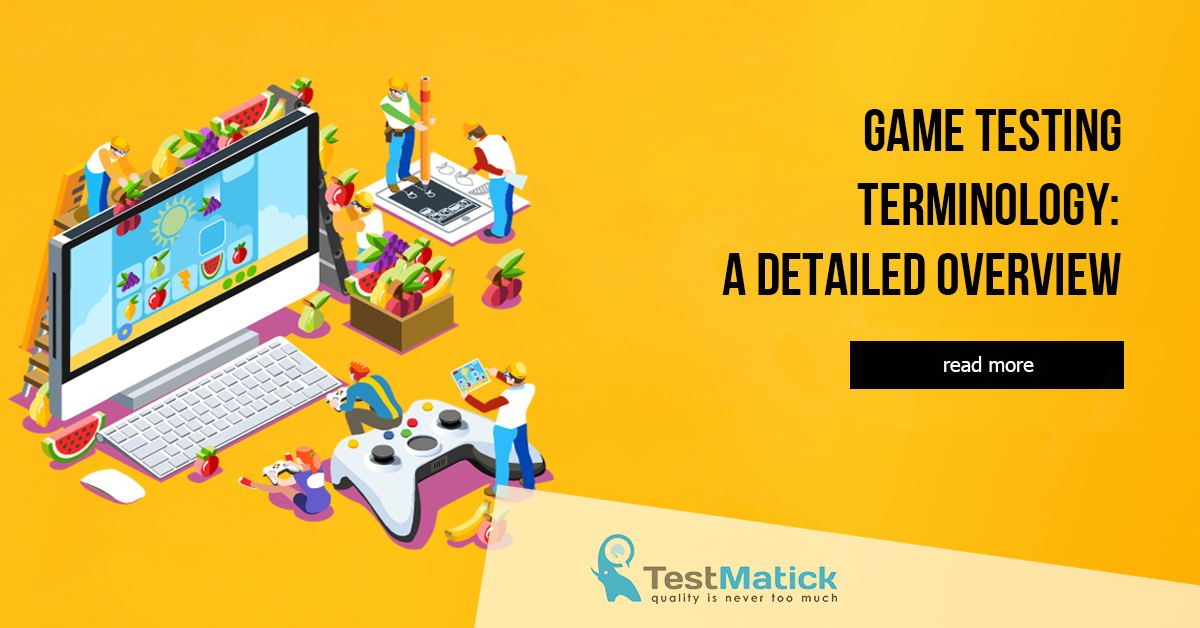If you perform game testing, you need to be familiar with so-called “gaming” terminology, which will help you thoroughly understand what needs to be done.
Game testing terminology.
- Account – contains user’s data that relates a real user to a virtual character (hero).
- Up – moving a hero to the next level; AP (Attribute Points) are points that help improve hero’s skills; AP (Action Points) are points of acting in turn-based games; AP (Arena Points) are points gained for achievements on an arena; AP (Attack/Ability Power) mean skills.
- Hint – a detail of graphical interface, a method of informing, educating. When a game has been launched, a hint tells additional information about the game or describes the next steps. A pop-up appears after hovering a cursor over an object and after entering information and tells about an error.
- Loading Screen – a video, one or several images that are displayed after launching a game while it is being loaded. It can be displayed on a screen after launching each game level.
- Digital Artifacts – defects of an image: visual and audio ones.
- Frames per Second, FPS – the quantity of updating images in a frame buffer by a game process.
- Briefing – a game window that pops up before each game level. It includes a level overview and tasks for a gamer.
- Debriefing – a game window that pops up when a game level is passed. It includes information about the number of points gained by a gamer and also a list of executed and non-executed tasks.
- Tutorial – educating. It’s an instruction on how to undergo a game process with a description of each level of its mechanism.
- Splash Screen – an image that is displayed after launching a game (image, logo).
- Cheat Code – a possibility to test separate game levels, not passing the main game part, adding unlimited skills to characters.
- Leaderboard – a list of gamers that have received great results.
- 3D Model – a three-dimensional game object that consists of dots in dimension and polygons that form these dots.
- Texture – when an image is overlapped with a surface of a suggested model, giving it the color, creating the appearance of relief.
- Gameplay – a possibility to interact with a game, execute the tasks given by a game designer, by using game mechanics.
- Game Mechanics – a list of rules to create gameplay. Quest – an example of game mechanics. It’s a task performed by a gamer (character ) or a group of gamers and its successful execution results in their receiving of an award; Points – a quantitative value that is given for one or more actions; Combo – an award for an ability to implement game combinations; Community Collaboration, CO-OP – game dynamic aimed at uniting a game community to do mutual work: pass an obstacle; solve existing tasks; Event – a specific event that is relevant to a game process (competitions, fairs and so on). Administration dedicates them to valuable dates. Gamers can also execute them in a form of a tournament and so on; Daily Rewards – if you open a game, you will receive an award.
- Graphical User Interface, GUI – an interface whose elements are icons, menus, lists, etc. A user sees them on a screen in a form of graphical images.
- Build – a result of borrowing an application with a unique build version.
- Chat – a tool used to interact with other gamers through messages.
- Away From Keyboard, AFK – notifies that a user is temporarily not using a PC.
- Free to Play (F2P) – a method to make a web game popular, a user plays, not spending his/her money. Buy to Play (B2P) – game purchasing. Pay to Play (P2P) – purchasing a subscription.
- Feedback – when gamer’s actions are followed by visual or sound reaction, e.g. a sound of a car, breaking glass, falling, and so on.
- Level Design – a certain order during game development that includes the creation of game levels: locations, tasks, missions. It’s performed by a level editor aimed at creating game levels.
- Computer Animation – a type of animation created with the help of a computer. Computer animations contain only moving images.
- Ban – a method of punishment. A user may be punished by not complying with conditions or rules. Ban is set by an admin for incorrect behavior of a user. Ban is temporary or permanent: blocking an account, giving a limit or limitations while using services.










Leave A Comment